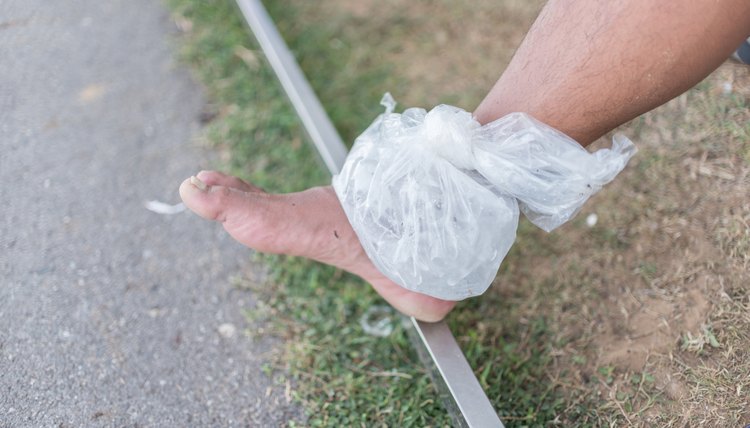How to Alternate Ice and Heat for Sore Muscles

Pain from sore muscles can interfere with daily activity. However, ice and heat can decrease muscle soreness and speed your recovery. While both treatments are beneficial, they are best suited for different situations. Ice and heat may also be alternated as soon as 3 days after injury.
Icing an Injury
Immediately after injury, muscle soreness occurs as tissues are overstretched or torn. Bleeding and swelling often occur inside and around your muscle. Ice application after an injury constricts your blood vessels, decreasing blood flow to the area and limiting swelling. Nerve activity is decreased by cold, which diminishes your pain. Ice is typically applied for 10 to 20 minutes every 3 to 4 hours. It can be used daily until your pain is gone.
Heat Application
Heat application increases blood flow to the injured area. For this reason, heat should not be used for the first 2 to 3 days after injury. Heat is typically applied for 15 to 20 minutes to improve flexibility and reduce stiffness. Following the first 3 days after injury, you can alternate the use of ice and heat to treat your sore muscles. Apply heat if you're feeling stiff -- for example, in the morning after you get out of bed. Apply ice to decrease pain after activities.
Contrast Baths
Contrast baths may decrease pain and swelling in your sore muscles. They work best for areas that can be easily submerged in water. Alternating immersion in warm and cold water helps flush excess fluid out of the area as your blood vessels expand and contract. Warm bath temperatures should range from 105 to 110 degrees Fahrenheit and cold baths from 50 to 65 F. Specific instructions for contrast baths vary, but they can begin immediately after injury. Treatment typically lasts for 10 to 30 minutes and may be performed more than once a day.
References
- Cambridge University Hospitals: Contrast Bath Instructions
- Malanga GA, Yan N, Stark J. Mechanisms and efficacy of heat and cold therapies for musculoskeletal injury. Postgrad Med. 2015;127(1):57-65. doi:10.1080/00325481.2015.992719
- Erdinç Gündüz N, Erdem D, Kızıl R, et al. Is dry heat treatment (fluidotherapy) effective in improving hand function in patients with rheumatoid arthritis? A randomized controlled trial. Clin Rehabil. 2019;33(3):485-493. doi:10.1177/0269215518810778
- Hotfiel T, Mayer I, Huettel M, et al. Accelerating recovery from exercise-induced muscle injuries in triathletes: Considerations for Olympic distance races. Sports (Basel). 2019;7(6):143. doi:10.3390/sports7060143
- Ihsan M, Périard JD, Racinais S. Integrating heat training in the rehabilitation toolbox for the injured athlete. Front Physiol. 2019;10:1488. doi:10.3389/fphys.2019.01488
Writer Bio
Dr. Bailey is a physical therapist with an additionaldegree in psychology and board certification in hand therapy. She is a Level 1CrossFit Coach and former ACSM certified personal trainer. Dr. Bailey is alsoan Anatomy and Physiology professor and has been writing health and fitnessarticles for over 10 years.
